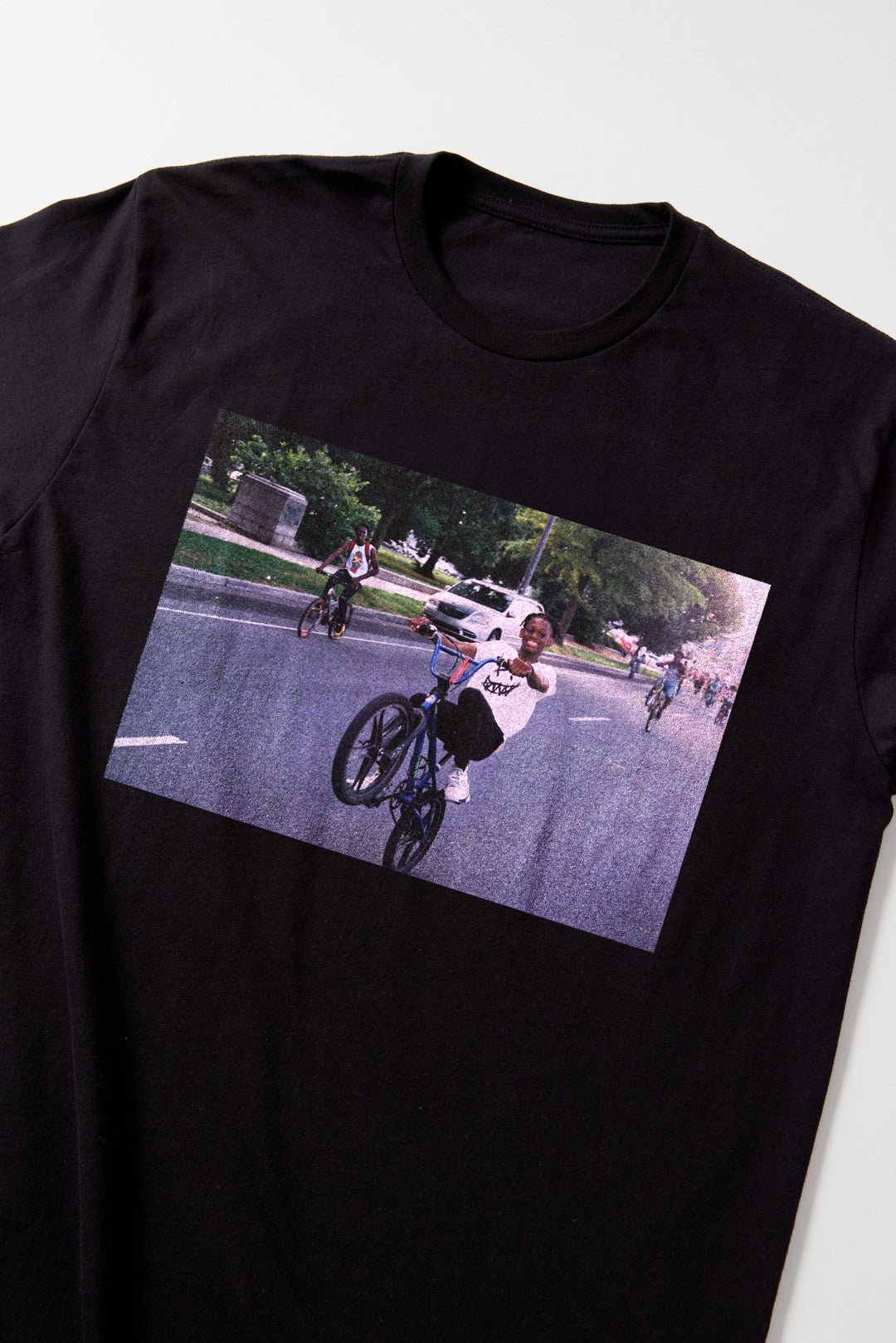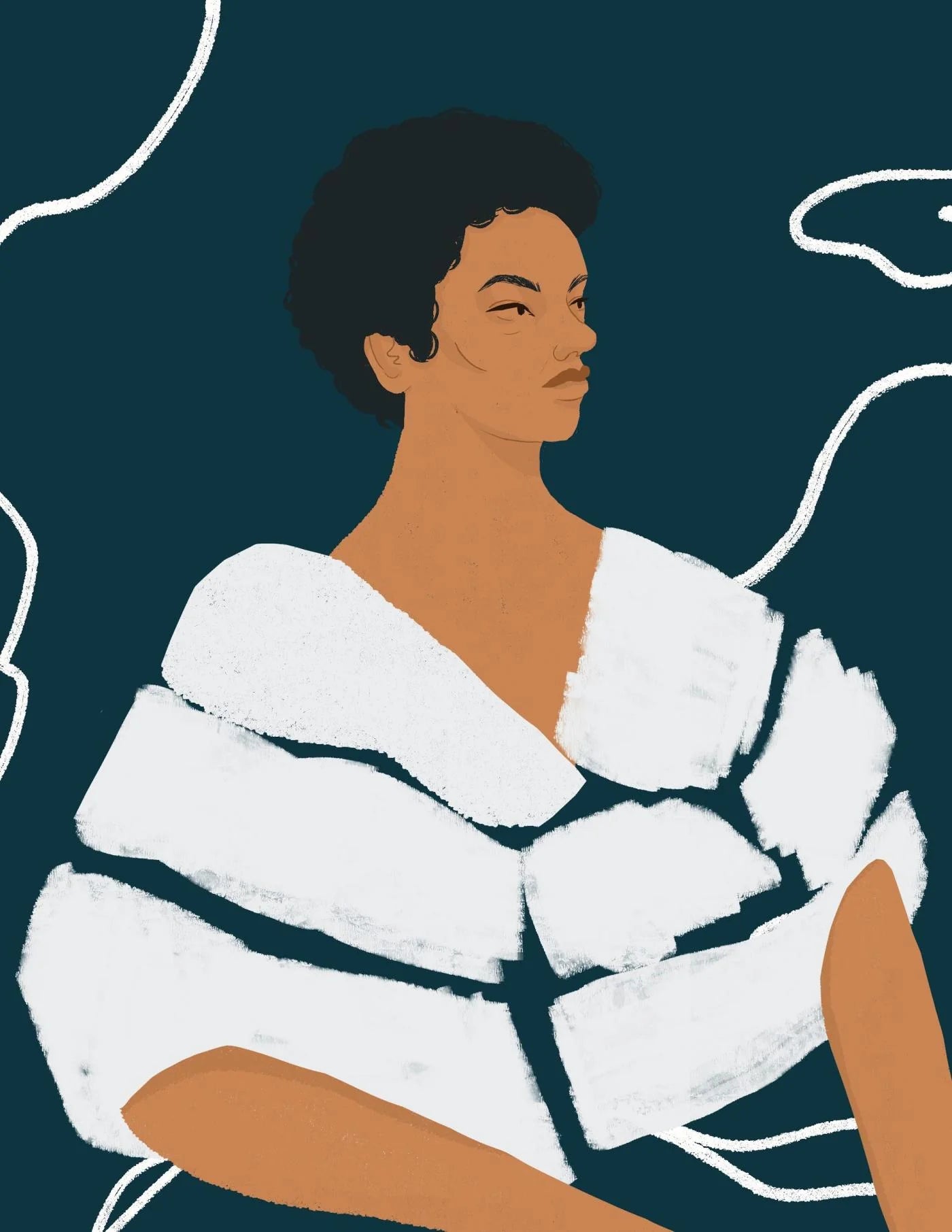WORDS: MYLES E. JOHNSON
“Everywhere I’m looking now, I’m surrounded by your embrace. Baby, I can see your halo. I pray it don’t fade away.”Beyoncé
Most artists are in conversation with their elders whether they desire to be or not. Through comparison, rightfully acquired because of similarities or because of the public’s laziness, artists of the present are constantly compared to the artists of the past.
This is because of the incessant need to understand what is being displayed to you. If you are presented something new but want to know what to do with it, you compare it to things you’ve already experienced in the past and treat it like that. This works for a while, but artists inevitably evolve into the unique selves they are destined to be and through constant comparison to other artists that have existed before them and peers, the public consistently tries to figure out how to best consume these artists. This is usually through years and years of comparison. All artists deal with these comparisons differently. Some artists reject the comparisons to artists of the past and some artists embrace them. Some artists reject the comparisons to their peers and some artists embrace them. These things can evolve over time. Lady Gaga is remembered warmly embracing comparisons to Madonna, and as she grew as an artist, she began to reject these comparisons and insist she was different listing her skill sets that make her a musician that is quite different, especially musically, from Madonna. Granted some of these differences that Lady Gaga named were appropriate distinctions to make, but the underlying desire was not to be seen as more talented as much as it was about desiring to arrive at a unique self as an artist. It also can be seen as Lady Gaga’s attempt to evolve in the public consciousness and arrive at new, better comparisons. It can also be seen as though Lady Gaga does not mind comparisons, but certain comparisons are deemed worthier than others. She might not deem a Madonna comparison as worthy as a comparison to someone seen as more musically inclined like Barbara Streisand or Elton John. This desire to embrace, reject, and often, evolve the comparison is a common dance in an artist’s life, however, there is no one that has had as interesting a relationship with this dance as the superstar, Beyoncé. Year after year, era after era, Beyoncé has posed herself as the superstar of the millennial generation; the pivotal performer that comes along once a generation that has the world enchanted absolutely. She is Elvis Presley. She is James Brown. She is Michael Jackson. The space she has arrived at is usually not given to black women without a type of cultural permission. Janet Jackson arrived at her stardom and public interest because she came from a family of men that had already acquired a global interest. Her proximity to that informed interests, and even then, she needed two albums and a male producer duo to arrive at the same star power as her male family members, namely Michael Jackson. This isn’t to suggest that she was not just as talented, but it takes more work to get America enchanted with a Black woman, even if she does everything right. Other artists like Whitney Houston and Mariah Carey had incredible industry co-signs, and stepped into their careers through talent, but also this proximity to wholesomeness that appeases white supremacy. Both transgressed this wholesome image, privately (Whitney Houston marrying Bobby Brown) and publicly (Carey stripping away her clothes in the ‘Honey’ music video), later in their career, but Black women arriving at their stardom through transgressing the hegemonic norms for womanhood is more of a rarity. Beyoncé is a rarity in Black female icon-hood in that way. She arrived at her stardom not totally transgressing white supremacist aesthetics (long blonde hair, revealing clothes, light skin), but she was never sweet and as wholesome as a Mariah Carey riding a horse through a field or a Whitney Houston singing church hymns, even in childhood. She even arrived at a reputation of being quite evil in the eyes of the public due to rumors of diva attitude and removal, and replacement of group members in Destiny’s Child. Aside from Wyclef, there is no clear male influence that can be held solely responsible for why she is as famous and powerful as she is today. In the same breath, you can say that Beyoncé has been using way more men to arrive at her stardom since the beginning of her career than other Black woman icons that may be able to only be linked to one. Her father who served as her manager, the musical feature of a then mega-powerful Wyclef, and of course, affiliation to one of the most powerful and well-known male artists in the world, Jay-Z, still feel beside the point when we think of Beyoncé as not just successful, but Michael Jackson, Elvis Presley, James Brown. Beyoncé has a similar power as Dolly Parton in that the legend of who Beyoncé is can never be solely linked back to one man or event. The idea is, regardless, Beyoncé would be born and those lucky enough to witness or assist were blessed, but not entirely necessary in the cultivation of the superstar we see before us. Something about Beyoncé seems like fate, and in a world not filled with much faith and hope, is enthralling. No matter what you believe, something about witnessing legends and icons perform feels like a destiny materialized on stage. This enthrall must inform how we think about Beyoncé, her art, and her business; so many material things are at play, but it is the immaterial, elusive thing that keeps it all going, that keeps the public enchanted. This God-like quality makes how Beyoncé interacts with comparisons different than any other superstar of our generation. Virtually everyone you can imagine a Beyoncé being comprised of, she has referenced through her work in music and film or performed with; Tina Turner, Diana Ross, Prince, Michael Jackson, Whitney Houston. She doesn’t simply embrace or reject comparisons like all artists do, she uses them and that immaterial, elusive quality they have to magnify her own ‘it’ factor. Witnessing Beyoncé keep up with Prince or Tina Turner doesn’t just seem like simply paying homage, but a passing down of a torch. This, I believe, informs Beyoncé’s relationship with the comparison. She doesn’t find the comparisons wrong or daunting, but a reminder that immaterial, elusive thing that only a few select superstars have.“Like MJ’s doctor, they killing me.”Nicki Minaj Beyoncé allows comments to be made about the icons that paved the road for her stardom, but I don’t see it as disrespectful or just the nature of hip-hop vulgarity; I see it as serving as a reminder to Beyoncé. That lyric may seem harsh to some but is a reminder to Beyoncé that even those closest to her can harm her. Surely, this is a necessary truth for someone in her position to recognize if she desires to dodge the realities that took Michael Jackson’s life. Jay-Z raps, “Now, eat the cake, Anna Mae.” There has been a lot of opinions on Beyoncé allowing her husband to rap the lyric that references a scene in a movie where Tina Turner was being abused. I interrogated the lyric beyond if I found it morally correct or the most feminist decision to make but meditated on it also as a way for Beyoncé to remind herself through her music. Beyoncé is a strong black female, as was Tina Turner, and perhaps, I think, that even the strongest of women and superstars can be dominated. I think moments like these in Beyoncé’s music function as mourning. I’m not interested in the moralizing of these lyrical moments, just like I am not interested in hailing Beyoncé’s performances with these artists. I am interested in how Beyoncé mourns and reckons with her immaterial, elusive qualities as an icon and grapples with the reality of being a vulnerable mortal, in public. She does not hide this reckoning or mourning. She turns her stage purple as “Purple Rain” plays for Prince. She sings “I Will Always Love You” for Prince. She cries to “I Can’t Help It” while on stage being marveled by thousands of fans. She sings some of her most raw, danceable songs with lyrics that remind us of the lowest times in our beloved icon’s lives. Her mourning turns into a type of reclaiming of tragedy, death, and the inevitable that doesn’t just seem cathartic for her, but a real reimagining of what these things mean. I think of the Lemonade project and the scenes of the funeral in New Orleans and images of people dancing on top of a casket during “Daddy Lessons”; I believe this is the best visual example of how Beyoncé mourns in public. She cries, she dances, she celebrates, she honors, she turns grief into humor, and she imagines, for all to see, the idea of the finite transitioning into the infinite.


